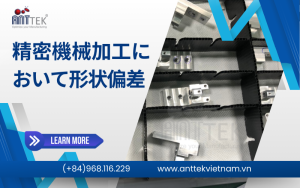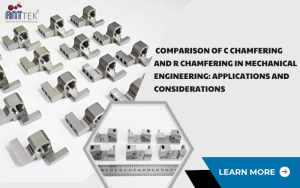NG series – Cause and Solution
Precision mechanical processing is a field where even the smallest deviations can lead to significant issues. One such issue is the NG (Not Good) series, a term used to describe parts that fail to meet the required specifications and tolerances. NG series parts are a critical concern in industries where precision is paramount, such as aerospace, automotive, and medical device manufacturing. This article explores the causes of NG series in precision mechanical processing and proposes solutions to mitigate their occurrence.
Causes of NG Series
Material Selection and Preparation
- Material Variability: Raw materials used in precision machining often come with inherent variations in composition, grain structure, and mechanical properties. These variations can lead to inconsistencies in machinability and final part dimensions.
- Material Contamination: Contaminants such as oils, dust, or foreign particles on the surface of raw materials can interfere with machining processes, causing tool wear, surface defects, or dimensional inaccuracies.
- Metallurgical Issues: Materials may exhibit internal stresses, uneven microstructure, or defects like voids or inclusions. During machining, these issues can manifest as cracks, warping, or failure to achieve desired surface finish.
Tooling and Machine Factors
- Tool Wear and Sharpness: As cutting tools wear down over time, their cutting edges become less effective. Dull tools can generate excessive heat, lead to poor surface finish, or cause dimensional inaccuracies due to inconsistent cutting forces.
- Tool Chatter and Vibration: Improper tool selection or setup, as well as inadequate rigidity of the machining setup, can result in tool chatter and vibrations. These vibrations can affect surface finish, cause tool breakage, or lead to deviations from desired tolerances.
- Machine Dynamics: Machines must maintain stability during operation to ensure consistent cutting forces and dimensional accuracy. Factors such as worn bearings, loose components, or inadequate machine rigidity can contribute to NG parts.
Process Control and Operational Factors
- Cutting Parameters: Incorrect cutting speeds, feeds, or depths of cut can result in overheating, tool wear, or poor chip formation. Optimizing these parameters based on material properties and machining conditions is crucial to achieving desired part quality.
- Cooling and Lubrication: Inadequate cooling and lubrication can lead to overheating of tools and workpieces, causing thermal distortion, poor surface finish, or accelerated tool wear. Proper selection and application of coolant and lubricant are essential.
- Chip Control: Improper chip evacuation or management can lead to chip buildup around the cutting tool, resulting in poor surface finish, tool wear, or even tool breakage. Effective chip control strategies are critical in precision machining.
Human Factors and Quality Assurance
- Operator Skill and Training: The competency of machine operators in understanding machining processes, tool handling, and troubleshooting is crucial.
- Insufficient training can lead to errors in setup, operation, or adjustment of machining parameters.
- Quality Control: Inadequate inspection methods or irregular quality checks can allow defective parts to pass through to subsequent operations or final assembly. Robust quality assurance practices are essential to detect NG parts early in the manufacturing process.
- Documentation and Traceability: Clear documentation of machining parameters, tooling specifications, and inspection results ensures consistency and facilitates root cause analysis when NG parts are identified.
Environmental and External Factors
- Temperature and Humidity: Variations in environmental conditions, such as temperature and humidity fluctuations, can affect material dimensions through thermal expansion or contraction. Climate-controlled machining environments help mitigate these effects.
- External Contaminants: Airborne contaminants, shop floor debris, or improper storage of materials can introduce foreign particles or corrosion, compromising part integrity during machining.
Solutions of NG Series
Material Selection and Preparation
- Material Certification: Work closely with reliable suppliers who provide materials with certified quality standards. Ensure materials meet specified composition, mechanical properties, and cleanliness requirements.
- Material Inspection: Implement rigorous incoming material inspection protocols to detect defects such as cracks, inclusions, or surface imperfections before machining. Use non-destructive testing methods like ultrasonic testing or X-ray inspection where necessary.
- Material Handling: Store and handle materials in controlled environments to prevent contamination or damage. Use proper handling equipment and ensure surfaces are clean and free from debris before machining.
Tooling and Machine Optimization
- Tool Maintenance and Replacement: Establish a preventive maintenance schedule for cutting tools. Regularly inspect tools for wear, damage, or dullness, and replace them promptly to maintain optimal cutting performance.
- Tool Selection: Choose cutting tools appropriate for the material being machined and the specific operation. Consider factors such as tool material, geometry, coatings, and cutting parameters to maximize tool life and machining efficiency. Machine
- Calibration and Maintenance: Conduct regular calibration of machine tools to ensure accuracy and repeatability. Monitor machine conditions such as spindle alignment, backlash, and vibration levels, and address any issues promptly through scheduled maintenance. Damping and Rigidity: Enhance machine tool rigidity and stability by using vibration damping materials, optimizing machine foundations, and minimizing dynamic forces during machining operations.
Process Control and Optimization
- Optimized Cutting Parameters: Conduct cutting trials and experiments to determine the optimal cutting speeds, feeds, and depths of cut for each material and operation. Use cutting data provided by tool manufacturers as a baseline and adjust parameters based on actual machining performance. Cooling and Lubrication Systems: Invest in high-performance coolant and lubrication systems tailored to specific machining applications. Ensure proper application and coverage to maintain tool temperature, prevent overheating, and improve chip evacuation. Chip Control Strategies: Implement effective chip control methods such as through-tool coolant delivery, chip breakers, or specialized cutting tool geometries to manage chip formation and evacuation. This reduces tool wear and improves surface finish.
Operator Training and Quality Assurance
- Training Programs: Provide comprehensive training programs for machine operators on machine operation, tool handling, safety protocols, and troubleshooting techniques. Ensure operators understand the importance of following standard operating procedures (SOPs) and maintaining quality standards.
- Process Documentation: Develop and maintain detailed documentation of machining processes, including setup instructions, machining parameters, tooling specifications, and inspection criteria. Ensure documentation is accessible and updated regularly.
- Quality Control Measures: Implement robust quality control measures throughout the machining process, including in-process inspections, dimensional checks, and final inspection before parts proceed to subsequent operations or assembly.
- Root Cause Analysis: Establish a systematic approach to investigate and address root causes of NG parts through structured problem-solving techniques such as 5 Whys, fishbone diagrams (Ishikawa), or failure mode and effects analysis (FMEA).
Environmental and Facility Management
- Climate Control: Maintain stable environmental conditions within machining areas, including temperature and humidity control, to minimize thermal variations that can affect material dimensions and machining accuracy.
- Cleanliness and Contamination Control: Implement strict cleanliness protocols in machining environments to prevent airborne contaminants, dust, or debris from compromising part quality. Regularly clean workspaces, machines, and tooling to maintain cleanliness standards.
- Material Storage and Handling: Store materials in designated areas with proper storage conditions to prevent exposure to moisture, corrosion, or contamination. Use protective covers or containers to safeguard materials when not in use.
Anttek Vietnam – Specialist in mass precision mechanical processing

Anttek Vietnam is proud to be a leading designer and precision mechanical machinist, providing high quality and reliable products to customers.
With many years of experience in the field of jig design and processing, Anttek Vietnam has been a reliable partner of domestic and foreign customers.
For details, please contact:
- Factory: Lot 6, Lai Xa Industrial Park, Kim Chung, Hoai Duc, Hanoi
- Hotline: 0968.116.229 – 086.998.2628
- Email: khoi.pd@anttekvietnam.com
- Website: https://anttekvietnam.vn/

















